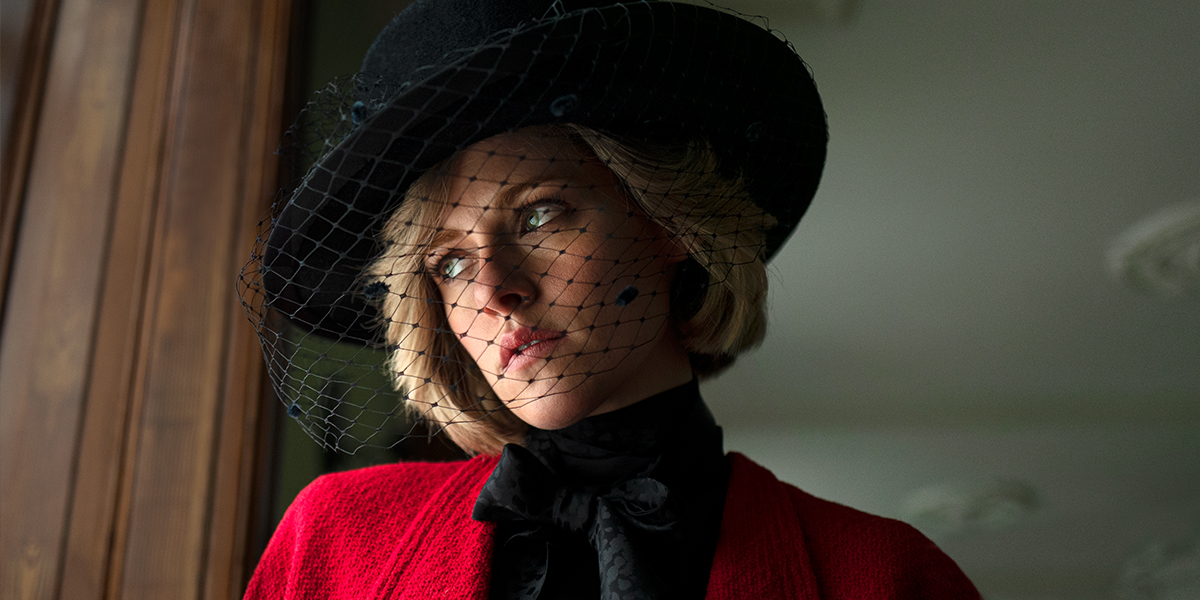It’s been 40 years since her royal wedding was witnessed by a global audience of 750 million and nearly 25 years since she was killed in a car crash in Paris, fleeing paparazzi, and the world still can’t get enough of Princess Diana. In March, Emma Corrin won a Golden Globe for her depiction of the princess in The Crown; earlier this fall, Diana, a filmed version of the Broadway musical, premiered on Netflix, while CNN aired a six-part documentary series and podcast about her life.
As the British monarchy continues to crumple under the weight of the most recent revelations of its cruelty, racism and connections to sex criminals, Diana’s stardom not only endures but somehow shines even brighter. No wonder: earnest, stylish, deeply in her feelings, a champion of social causes and a craver of approval, she feels just as apt an icon for this moment as she was for her own. She would have smashed it on social media and like her youngest son, she probably would have had a Netflix deal, too.
“Overwrought and over the top, it’s a very queer movie about the heterosexual fairy-tale myth of happily ever after.”
The new movie Spencer, directed by Pablo Larraín (Jackie) and starring Kristen Stewart, is the latest offering in the Princess Diana cultural complex, billing itself in the opening credits as “a fable from a true tragedy.” Set over a three-day Christmas holiday gathering at the royal family’s Sandringham estate in the early 1990s, the film quickly dispenses with the merely tragic and instead ascends—or descends, depending on your taste for ghostly hallucinations and on-the-nose metaphors about taming wild animals—into pure gothic camp. Overwrought and over the top, it’s a very queer movie about the heterosexual fairy-tale myth of happily ever after.
Diana, of course, holds a special place in the sympathies of the gay community for her early support of people with HIV/AIDS. In 1987, when she shook hands with an HIV-positive man, she was among the first high-profile celebrities to embrace a community subjected to virulent homophobia and stigma—it was a profound act of solidarity. (For a sense of what it was like to be queer and HIV-positive in Britain at the time, check out the recent Russell T. Davies series It’s a Sin.) Nor was her commitment fleeting or shallow: she remained deeply engaged in progressive causes and was a patron of U.K.’s National AIDS Trust at the time of her death in 1997.
But Diana’s queer legacy carries meaning, particularly for gay men, for more than just her advocacy. The juxtaposition of her glamour and beauty alongside her palpable fragility—the way she would look up with those wounded doe eyes from under her chic blonde fringe just so—made her an ideal gay icon. She was cheated on, she grappled with depression and an eating disorder, she was locked up in a literal castle, and yet she could still cut up a rug with John Travolta and pal around with Elton John. “Is there anything more queer than a fabulous woman trapped in a bleak household?” wrote journalist David Levesley in a tribute to Diana in 2018. “It’s the story we all bear: Who among queer people, not unlike Diana, haven’t forced ourselves to try and find joy in the joyless?”
There’s little joy to be found in Spencer, but Stewart, with her broody looks and not-entirely convincing British accent, is an unlikely yet genius bit of casting. Like Diana, Stewart became a hugely famous person at a very young age and maintains an uneasy relationship with her celebrity. Stewart gamely and fearlessly follows the film into its darkest and weirdest places and embodies both Diana’s deep unease and her preternatural charisma.
Arriving late to the festivities alone and without a driver or bodyguard (serious no-nos), Diana proceeds to skulk and sulk around the freezing castle like an errant show pony, dripping in jewels and floating in silk and taffeta gowns that have been pre-selected for her. This is a command performance for the sake of optics—the royal family and its handlers don’t actually welcome her. She is iced out by everyone but her anxious young sons, a sympathetic chef (Sean Harris) and her smitten, queer dresser (Sally Hawkins).
Then there’s her estranged husband, Prince Charles, who adds insult to her many, many injuries by presenting her with the same set of oversized pearls that he has gifted his mistress Camilla Parker Bowles. At the Christmas feast, Diana fantasizes about ripping the pearls from her neck, crushing them with her teeth and eating them—an allusion to her swallowing her rage that is echoed in later scenes with her sneaking handfuls of food from the pantry and then forcing herself to purge.
Larraín ups and ups and ups the ante of the well-established details of Diana’s mistreatment by the royal family by heightening Diana’s paranoia over the course of the holiday. The discordant score by Radiohead’s Jonny Greenwood rattles the nerves, while Sandringham’s empty yet claustrophobic interiors ominously recall The Shining’s Overlook Hotel. In the dark corners, soulless ballrooms and endless highways of hallways, Stewart’s Diana twirls in sad, solo dance parties and is haunted by the spirit of Anne Boleyn (get it? she also lost her head). “I’m a magnet for madness,” Diana sighs.
It’s melodramatic camp and then some—seriously: RuPaul’s Drag Race acting challenges have more subtlety—and it certainly knows its audience. In what seems to be a nod to both Diana’s gay admirers and Stewart’s own queerness, Hawkins’ character confesses that she is in love with Diana when the two run away to a deserted beach for a bit of respite. (Diana is flattered but not tempted, alas.)
And yet the film, while meant to build sympathy for Diana, often paints her as a royal pain. In her couture clothes, married into a family that profited from centuries of dispossession, colonialism and the transatlantic slave trade, she whines non-stop about her misery to the beleaguered staff made to wait hand-and-foot on the monarchs. She forgets to buy Christmas gifts for her sons, and so hands them a couple of stuffed animals she picked at a road stop en route. She is perpetually late and relentlessly self-involved, and utterly oblivious to the pain of others around her. The film adds little to the glut of interpretations of her life and legacy and then nonsensically concludes with a whiplashing tonal shift that imagines her like the protagonist of a 1980s John Hughes movie.
This isn’t to say that Diana’s life wasn’t sad or her premature death wasn’t tragic—they were. But Spencer’s depiction of the princess falls into the common trap of over-identifying with the very rich and famous. The mistreatment of Diana was not nearly the first nor the worst of the British royal family’s centuries of sins. Spencer ultimately leans so heavily into the dramatized horror of Diana’s poor-little-rich-girl victimhood that there is little oxygen for those who are also in pain, or those who she, in turn, harms—namely her children pushed into the role of being their mother’s caretaker.
It’s a bravura performance by Stewart but a too messy portrait of Diana. After all, what made Diana special was not the compassion the world showed to her, but the compassion she showed to the world. And what made her a gay icon was not her suffering but how she tried to transcend it.


 Why you can trust Xtra
Why you can trust Xtra


